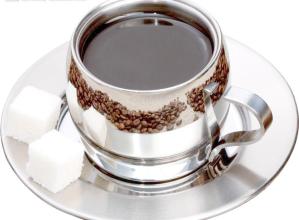Characteristics of coffee flavor and taste of Malaba coffee in Rwanda introduction to Chimeier Manor in manor producing area
There are many mountains in Rwanda, which is called "the country of a thousand hills". The whole country is at a high altitude: the lowest point, the Luzizi River, is also 950 meters above sea level. The Midwest is dominated by mountains, which are part of the Aberdeen Rift Valley, which is part of the East African Rift Valley, extending from north to south along the western border of Rwanda. The highest mountain in the country is located in the volcanic chain of the Virunga Mountains in the northwest, of which Calisin is 4507 meters higher than the volcano, which is the highest geographical point in Rwanda. The mountain area in the western part of the country, located in the Aberdeen Rift Mountain Forest Ecological region, is between 1500 and 2500 meters above sea level. Central Rwanda is dominated by rolling hills, while the eastern border is made up of savannas, plains and marshes. [2]
Climate
Rwanda has a temperate and tropical plateau climate, and because of its high altitude, its temperature is lower than that of typical equatorial countries. The daily temperature in Kigali, located in the middle of the country, is generally between 12 and 27 °C, with small fluctuations throughout the year. There is also a large temperature difference in some parts of the country, with temperatures lower in the mountainous west and north than in the eastern low-lying areas. Rwanda has two rainy seasons each year, each from February to June and the second from September to October, while there are also two dry seasons, with a longer duration from June to September, often with no rainfall at all. the other lasts from December to February, which is relatively less serious than the previous one. Rainfall varies from region to region, with more rainfall in the west and northwest than in the east and southeast. However, the rainy season pattern has changed as a result of climate change. According to a report by Strategic foresight, the number of overcast and rainy days each year is sometimes smaller, but the rainfall is greater in a short period of time. In other cases, there will be frequent torrential downpours in a single day, more than in the past month combined. In addition, there are cases where the rainy season comes late or ends early.
Malaba Coffee grows in southern Rwanda, about 12 kilometers (7 miles) from the city of Butare and 150 kilometers (93 miles) from the capital, Gejali. The plan began in the Malaba area of Butare province, but was taken over by a local government organization in 2006, which is now part of the Huye district of the southern province. Due to its proximity to the East African Rift Valley and the Neuenway Forest Mountains, this zone is sloping, steep and has fertile volcanic soil. Coffee is grown at 1700 to 2100 m (5577-6889 ft) above sea level, usually with terraces on steep hillsides. The zone also has an average annual rainfall of 115 centimeters (45 inches). Most of them come from the rainy season from March to May, which is also the main coffee harvest season. The temperature at high altitude is slightly lower, with an average of about 20 °C (68 °F), which varies slightly due to seasons.
Production process
Coffee fruit
Coffee fruit
The biggest harvest season for Rwandan coffee is during the main rainy season, from March to the end of May. During the harvest season, farmers spend most of their day picking coffee fruits by hand. In the afternoon, farmers carry coffee fruits in traditional baskets made of banana leaves to a cleaning station a few hours away. The mechanic picks out the best quality crimson coffee fruit by hand and returns the remaining coffee fruit to the farmers and sells it at a low price in the market outside the Malabaga work area. The mechanic pays the farmer $0.10 per kilogram. The guild deposits the remuneration into the farmer's bank account every two weeks.
The sink technician in the process will clean the coffee immediately because the delay will ferment the sugary outer layer of the coffee beans, ruining the taste of the coffee. The coffee beans are first thrown into a deep trough, and the best quality coffee fruit goes into the bottom and passes through a machine that peels off its skin. The mechanic takes out the floating coffee fruit, processes it in the same way and allows the cooperative to sell it at a lower price in the domestic market. Coffee beans through three cooperative peeling and selection machines, remove the skin and sugary outer layer, and then let the coffee beans individually through the vibrating filter. The filter separates the highest quality A beans from those classified as Class B; the two grades are transported to the hills with a 1% slope of the waterway. In the process of transportation, coffee beans of all qualities are further classified, and there are about 15 sinks at the bottom of the channel that can capture different kinds of coffee beans. Coffee beans are preserved continuously in water. Grade A beans and grade B beans stay for two days and 15-20 hours respectively to slightly ferment and convert the remaining sugar without serious damage to the taste.

Important Notice :
前街咖啡 FrontStreet Coffee has moved to new addredd:
FrontStreet Coffee Address: 315,Donghua East Road,GuangZhou
Tel:020 38364473
- Prev

Fragrant and authentic Salvadoran Coffee Manor flavor and taste characteristics of Renas Manor
The National Assembly of El Salvador adopts a unicameral system, with a total of 84 members, of which 64 are distributed according to the proportion of the population of San Salvador and San Salvador, while the remaining 20 are determined according to the number of votes obtained for a term of three years and can be re-elected. The latest parliament was established in May 2015 and will serve until April 2018, with 35 seats for the Nationalist Republican Alliance, 31 seats for the Marty Front and 31 seats for the people.
- Next

Panamanian Coffee Flavor with elegant Flavor; an introduction to the Jadeite Manor
The Panamanian National Assembly is a unicameral system that exercises legislative power. It is composed of 70 members who are directly elected for a term of five years. The current parliament was formed on July 1, 2009, and the seats occupied by various parties are as follows: Democratic change Party (member of the ruling coalition) 36 seats, Democratic Revolutionary Party 17 seats, Panamanian Party 12 seats, Nationalist Republican Freedom Movement Party (ruling coalition member) 4 seats, people's Party 1
Related
- Does Rose Summer choose Blue, Green or Red? Detailed explanation of Rose Summer Coffee plots and Classification in Panamanian Jade Manor
- What is the difference between the origin, producing area, processing plant, cooperative and manor of coffee beans?
- How fine does the espresso powder fit? how to grind the espresso?
- Sca coffee roasting degree color card coffee roasting degree 8 roasting color values what do you mean?
- The practice of lattes: how to make lattes at home
- Introduction to Indonesian Fine Coffee beans-- Java Coffee producing area of Indonesian Arabica Coffee
- How much will the flavor of light and medium roasted rose summer be expressed? What baking level is rose summer suitable for?
- Introduction to the characteristics of washing, sun-drying or wet-planing coffee commonly used in Mantenin, Indonesia
- Price characteristics of Arabica Coffee Bean Starbucks introduction to Manning Coffee Bean Taste producing area Variety Manor
- What is the authentic Yega flavor? What are the flavor characteristics of the really excellent Yejasuffi coffee beans?

